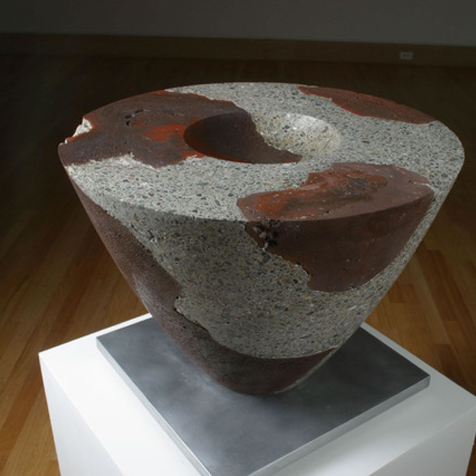Aki Mori was born and educated in Japan before moving to California in 1968. She holds a B.A. in Japanese Literature and a M.A. in Pedagogical Linguistics, and taught Japanese Language at numerous institutions throughout the San Francisco Bay area until retirement in 2005.
She studied Art History at Graduate School of Waseda University in the 1960’s, and Printmaking at the Graduate School of San Francisco Art Institute in the 1970’s.
Her interest in photography grew in the 1980’s, and eventually became her medium to represent her ideas. The function of photography to freeze the proof of a visual experience is a necessity to her. The strength of photography to seal the existence of objects is inevitable, identifying objects as individual elements simultaneously to their being a part of a greater assembly.
Paper
When I photograph something, I try to capture how that object insists on its existence, regardless of its external being. Whether it is an active animal, or a crouching rock, it insists on occupying the space of its physical volume. The volume of a sheet of paper is minimal, yet I can certainly see how it makes its own space by pushing the air away. I am trying to capture that insistence.
どんなものでも、その外形を超えて自身の存在を必死で主張します。それがそこにあるということを撮りなさいと私に命じるのです。活発に動く動物であれうずくまる石ころであれ、それぞれの体積相応の空間を占めて物はその存在を主張しています。 薄い一枚の紙の体積は極わめてわずかなものですが、空気を押しのけて自分のありかを作り出す姿には確かなものがあります。その姿を捉えようとしました。
I, like others, find the serenity of traditional Japanese design and architecture, and their insistence on the investing of simple objects of use with both beauty and human relevance, very appealing and take from my knowledge of them what I can that serves my artistic and human purposes.
I am not a Japanese furniture-maker, nor do I make Japanese furniture. But people remarked on a Japanese spirit in my work, even before the Japanese aesthetic entered into it in an explicit way. I think of myself as a contemporary, Western furniture designer and craftsman, but certainly I have tried to bring some Japanese qualities to my work. Initially this was reflected primarily by an emphasis on simplicity and quietude in the work, but my recent work has borrowed very deliberately certain Japanese aesthetic devices, and has involved an attempt to fuse my interest in surface decoration and the abstraction of natural motifs into patterns, in the Japanese manner, with the essentially Western furniture that I make.
My most basic artistic goal, however, remains simply to make the best things I can, according to all that I know about things, and what makes them good.
At right: Janofsky with a trio of flitchcut planks. Janofsky’s sketchbooks contain drawings for works that make use of the “free edges” of planks sawn through and through like these. The edges seen in this picture might well appear in some future work.
















